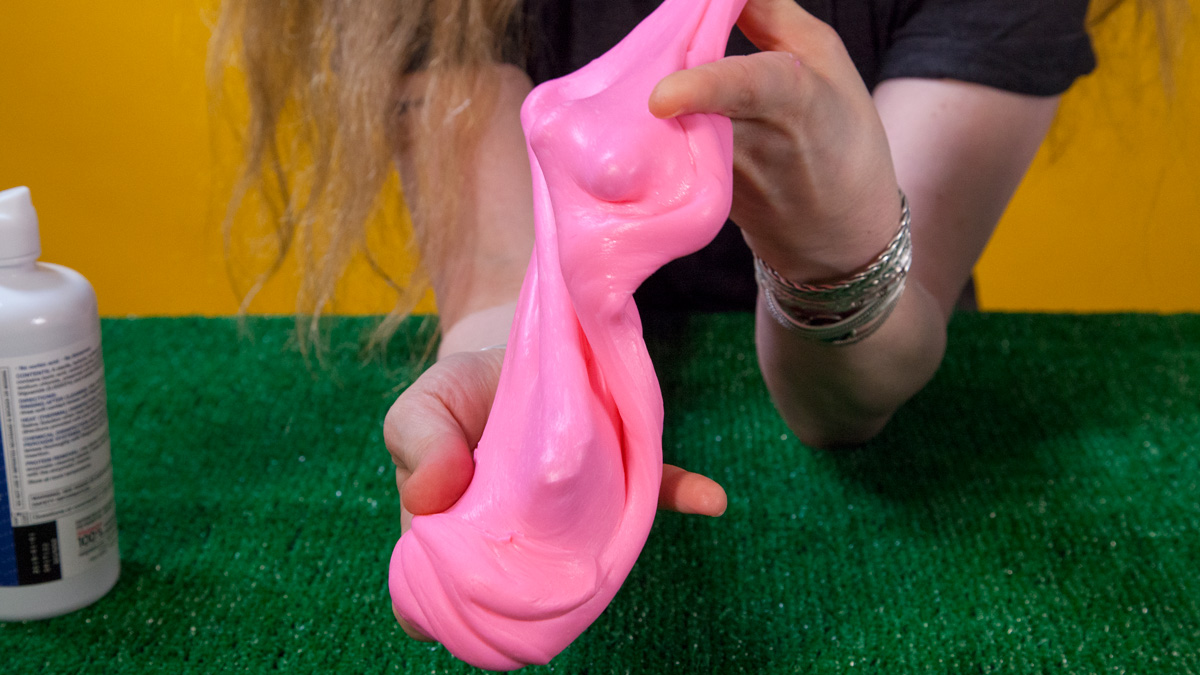Sticky, Gooey Science! Why Slime Is Awesome
Slime is an unusual substance with a slippery, gooey texture that is produced by certain animals to fend off predators or fight disease — but it's also a lot of fun to make, as Live Science recently discovered.
In a video tutorial, Live Science demonstrates how to make two types of slime — a "basic" slime, and puffy slime (which has a loftier texture) — from craft glue or school glue and a few other ingredients.
Both types of slime can be tinted in a range of colors using food coloring. But the most important ingredient for transforming liquid glue into slime is contact-lens solution with boric acid, which triggers a chemical reaction in the glue to alter its properties and give it a signature "slimy" feel. [Goopy Science: How to Make Slime with Glue]
But what is slime? Slime is generally defined as a sticky substance with a texture that is not quite liquid but not quite solid, either. It is often referred to as a non-Newtonian fluid, which means that its viscosity — how quickly or slowly it flows — may be affected by factors other than temperature, such as pressure, according to the American Chemical Society (ACS).

Handmade slime is fun to play with, but in the natural world, slime production can play a critical role in an animal's health and well-being. Slimy mucous cocoons protect some fish from parasites, and humans produce a fair amount of mucous ourselves — over a liter (more than 33 fluid ounces) per day — which lubricates our nasal cavities, traps contaminants and can be an indicator of health, depending on its color.
But if there's a slime superhero in the animal kingdom, it's probably the hagfish. This jawless marine fish has an eel-like body, and when threatened, it secretes a chemical that turns the water around it into sticky slime, which clogs the gills of would-be predators. In one notable recent incident, a truck carrying 7,500 lbs. (3,400 kilograms) of hagfish overturned on an Oregon highway, resulting in a prodigious quantity of goo that blanketed the road and nearby cars.
Hagfish slime is so resilient that military researchers are investigating its properties and producing synthetic versions to protect warships, which could function like stickier and slimier versions of the bullet-deflecting Kevlar armor that soldiers wear.
Sign up for the Live Science daily newsletter now
Get the world’s most fascinating discoveries delivered straight to your inbox.
And slime can have therapeutic qualities too, and not just because it's oddly soothing to knead and shape with your hands, as Live Science writers demonstrated in the video. A new study showed that an artificial adhesive inspired by slug slime could patch together wounds in wet tissue — even in a still-beating pig's heart.
For step-by-step instructions on how to make your own slime, check out Live Science's kid-friendly tutorials!
Original article on Live Science.

Mindy Weisberger is an editor at Scholastic and a former Live Science channel editor and senior writer. She has reported on general science, covering climate change, paleontology, biology and space. Mindy studied film at Columbia University; prior to Live Science she produced, wrote and directed media for the American Museum of Natural History in New York City. Her videos about dinosaurs, astrophysics, biodiversity and evolution appear in museums and science centers worldwide, earning awards such as the CINE Golden Eagle and the Communicator Award of Excellence. Her writing has also appeared in Scientific American, The Washington Post and How It Works Magazine. Her book "Rise of the Zombie Bugs: The Surprising Science of Parasitic Mind Control" will be published in spring 2025 by Johns Hopkins University Press.










